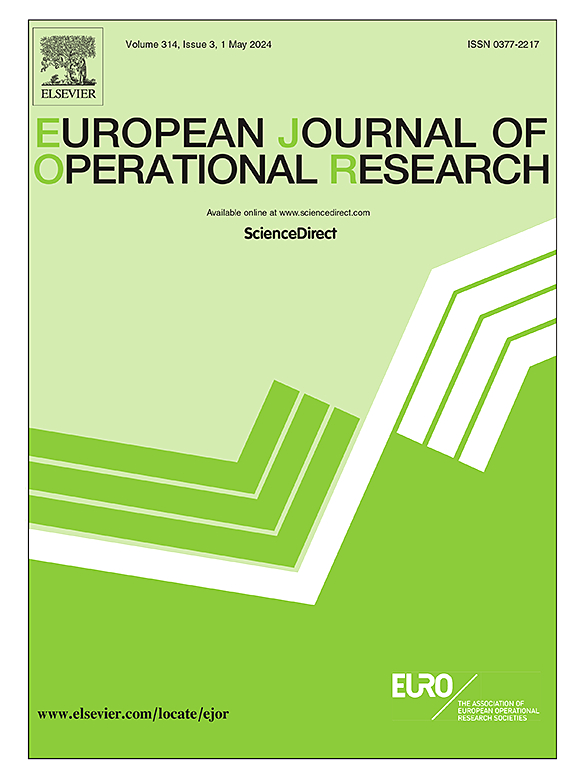Graph model for multiple composite decision makers with large-scale groups: Probability-hesitant fuzzy preference modeling and application
IF 6
2区 管理学
Q1 OPERATIONS RESEARCH & MANAGEMENT SCIENCE
引用次数: 0
Abstract
Whenever humans interact with others, conflict inevitably arises. Sometimes, multiple composite decision makers (CDMs) are involved, some of which may be large-scale groups. When making a decision or strategy selection, a CDM needs to consider the interests of the group and the wishes of individual decision makers (IDMs). For example, a CDM may judge a move to be an improvement only if a certain fraction of IDMs consider it so – in other words, only when the IDMs reach a certain degree of consensus. This paper proposes an index of group consensus on more preferred (IGCMP) and an index of group consensus on less preferred (IGCLP), and uses them to determine whether a CDM more or less prefers the current state to another and reflect the heterogeneous characteristics of CDMs, including conservative, aggressive, and eclectic. Accordingly, the conflict for multiple CDMs with large-scale groups is investigated in this paper from the perspective of group consensus within the framework of the Graph Model for Conflict Resolution (GMCR). At first, CDMs’ preferences are represented by probability-hesitant fuzzy preference relations, which can reflect the heterogeneity of IDMs and preference uncertainty of CDMs. Then, the new forms of the unilateral improvement list for CDMs and coalitions are developed based on IGCMP and IGCLP. Subsequently, five extended stability definitions and their relationships are studied. Finally, to demonstrate the effectiveness of the new method, it is applied to model a water pollution conflict in the Yangtze River Delta, China.大规模群体多复合决策者的图模型:概率犹豫模糊偏好建模及应用
每当人类与他人互动时,冲突不可避免地会出现。有时,涉及到多个复合决策者(cdm),其中一些可能是大型团体。当做出决策或战略选择时,CDM需要考虑群体的利益和个体决策者(idm)的愿望。例如,清洁发展机制只有在一定比例的idm认为是一种改进的情况下才会判断一项行动——换句话说,只有在idm达成一定程度的共识的情况下。本文提出了更偏好的群体共识指数(IGCMP)和更不偏好的群体共识指数(IGCLP),并使用它们来确定CDM是否更倾向于当前状态,并反映CDM的异质特征,包括保守,积极和折衷。因此,本文在冲突解决图模型(GMCR)框架下,从群体共识的角度研究了具有大规模群体的多个cdm的冲突。首先,cdm的偏好用概率犹豫模糊偏好关系来表示,这反映了cdm的异质性和偏好的不确定性。然后,在IGCMP和IGCLP的基础上,开发了cdm和联盟单边改进清单的新形式。随后,研究了五个扩展的稳定性定义及其相互关系。最后,为验证该方法的有效性,将该方法应用于长三角地区的水污染冲突模型。
本文章由计算机程序翻译,如有差异,请以英文原文为准。
求助全文
约1分钟内获得全文
求助全文
来源期刊

European Journal of Operational Research
管理科学-运筹学与管理科学
CiteScore
11.90
自引率
9.40%
发文量
786
审稿时长
8.2 months
期刊介绍:
The European Journal of Operational Research (EJOR) publishes high quality, original papers that contribute to the methodology of operational research (OR) and to the practice of decision making.
 求助内容:
求助内容: 应助结果提醒方式:
应助结果提醒方式:


